How to choose the right Material Handling Equipment for your warehouse?
Date Posted:13 June 2024
Choosing the right material handling equipment for your warehouse is essential for optimizing operational efficiency, safety, and productivity. Start by assessing your specific needs and challenges, and then explore different types of equipment, such as..
Selecting the right material handling equipment for your warehouse is a crucial decision that can significantly impact your operational efficiency, safety, and overall productivity. The right equipment can streamline processes, reduce labor costs, and improve storage capacity. This blog provides a comprehensive guide to help you choose the best material handling equipment for your warehouse.
Assess Your Needs and Requirements
1. Analyze Your Operations
Understanding the specifics of your warehouse operations is the first step. Evaluate the types of materials you handle, their sizes, weights, and the frequency of movement. Consider the flow of materials through your warehouse, from receiving and storage to picking and shipping.
2. Identify Bottlenecks and Challenges
Identify any bottlenecks or challenges in your current processes. Common issues might include slow picking times, difficulty in accessing items, or frequent equipment breakdowns. Recognizing these problems will help you determine which equipment can address them effectively.
Types of Material Handling Equipment
1. Storage Equipment
Storage solutions are critical for optimizing space and ensuring easy access to items. Common storage equipment includes:
- Pallet Racks: Ideal for storing large quantities of palletized goods.
- Shelving Units: Suitable for smaller items and bin storage.
- Mezzanines: Provide additional floor space by creating a second level within your warehouse.
2. Automated Systems
Automation can greatly enhance efficiency and accuracy. Consider the following automated systems:
- Automated Storage and Retrieval Systems (AS/RS): Use computer-controlled systems to store and retrieve items quickly and accurately.
- Conveyor Systems: Facilitate the movement of goods throughout the warehouse, reducing manual labor.
- Robotic Systems: Include automated guided vehicles (AGVs) and robotic arms for picking and transporting items.
3. Lifting Equipment
Lifting equipment is essential for moving heavy items safely. Options include:
- Forklifts: Versatile and widely used for lifting and transporting pallets.
- Pallet Jacks: Ideal for moving pallets over short distances.
- Cranes and Hoists: Suitable for lifting very heavy items or materials that cannot be moved with forklifts.
4. Transport Equipment
Efficient transportation within the warehouse ensures smooth operations. Consider the following:
- Hand Trucks and Dollies: Useful for moving smaller items or containers.
- Conveyor Belts: For continuous movement of products along a fixed path.
- Tuggers and Carts: Effective for transporting multiple items or containers simultaneously.
Key Considerations When Choosing Equipment
1. Space Utilization
Maximize your warehouse space by choosing equipment that fits well within your layout. Consider the vertical and horizontal space available and select storage solutions that optimize both.
2. Flexibility and Scalability
Choose equipment that can adapt to your changing needs. Flexible systems that can be easily reconfigured or expanded will accommodate future growth and shifts in operational demands.
3. Safety and Ergonomics
Safety is paramount in any warehouse setting. Select equipment designed with safety features to protect workers and minimize the risk of accidents. Ergonomic designs can also reduce strain and injury, improving overall worker well-being.
4. Cost and Budget
While it's essential to stay within budget, consider the total cost of ownership, including maintenance, training, and potential downtime. Investing in high-quality, durable equipment might have a higher upfront cost but can save money in the long run.
5. Technology Integration
Modern warehouses increasingly rely on technology for efficient operations. Ensure that your material handling equipment can integrate with your warehouse management system (WMS) and other technologies to streamline processes and improve data accuracy.
Evaluating Vendors and Suppliers
1. Reputation and Experience
Choose vendors with a proven track record and positive reputation in the industry. Experienced suppliers are more likely to provide reliable products and excellent customer service.
2. After-Sales Support
Consider the level of after-sales support offered, including maintenance services, availability of spare parts, and technical support. Reliable after-sales support ensures your equipment remains operational and minimizes downtime.
3. Customization Options
Some warehouses have unique needs that off-the-shelf solutions cannot meet. Look for vendors that offer customization options to tailor equipment to your specific requirements.
Training and Implementation
Proper training for your staff is essential to maximize the benefits of new material handling equipment. Ensure comprehensive training programs are provided by the vendor or a qualified third party. Additionally, plan for a smooth implementation process to integrate the new equipment into your operations with minimal disruption.
By carefully considering your operational needs, evaluating different types of equipment, and selecting the right vendor, you can enhance your warehouse efficiency and productivity, ensuring a streamlined, safe, and cost-effective material handling process.
Choosing the right material handling equipment for your warehouse is essential for optimizing operational efficiency, safety, and productivity. Start by assessing your specific needs and challenges, and then explore different types of equipment, such as storage solutions, automated systems, lifting equipment, and transport options. Key considerations include space utilization, flexibility, safety, cost, and technology integration. Additionally, evaluate vendors based on their reputation, after-sales support, and customization options. Proper training and smooth implementation of new equipment are crucial to maximizing its benefits. By following these guidelines, you can enhance your warehouse operations and achieve a more efficient and safe working environment.




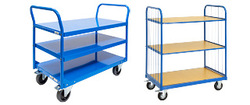

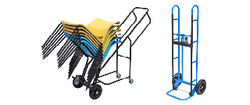


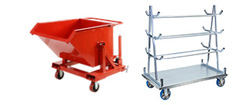
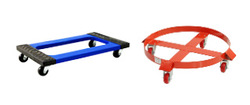
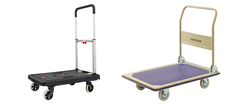
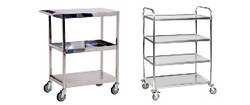

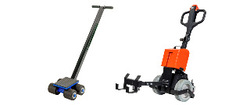
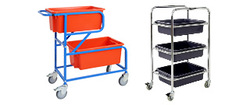
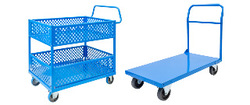
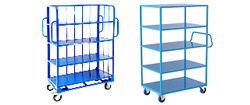
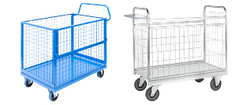
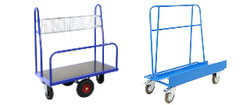
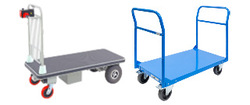
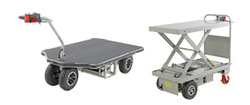

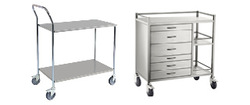
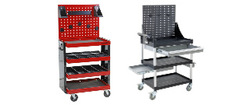
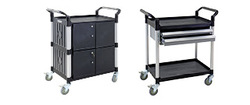
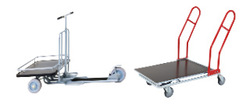
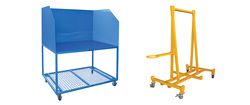



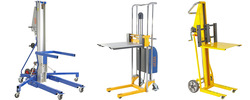



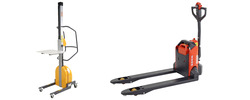
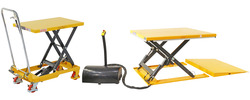
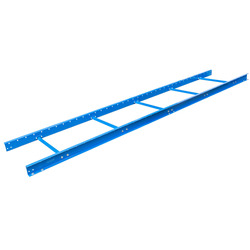
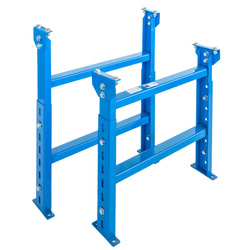

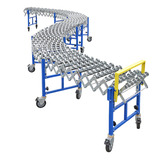




















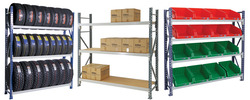
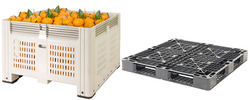
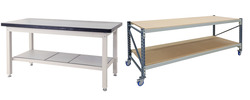
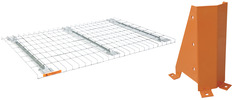
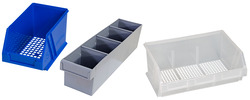

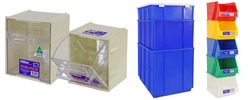

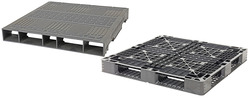

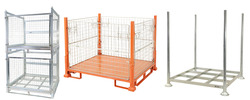

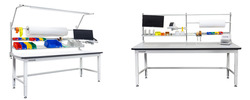


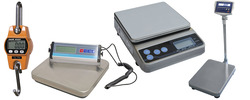



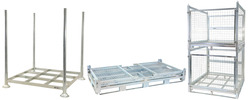
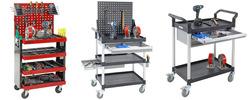
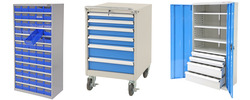

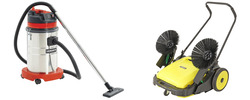











 Trolleys / Hand Trucks
Trolleys / Hand Trucks 2 Tier Trolleys
2 Tier Trolleys 3 Tier Trolleys
3 Tier Trolleys Aluminium Trolleys
Aluminium Trolleys Appliance & Hand Trucks
Appliance & Hand Trucks Cage Trolleys
Cage Trolleys Cleaning Carts & Trolleys
Cleaning Carts & Trolleys Construction Trolleys
Construction Trolleys Dollies
Dollies Foldable Trolleys
Foldable Trolleys Hospital Trolleys
Hospital Trolleys Laundry/Linen Trolleys
Laundry/Linen Trolleys Load Skates & Tow Tugs
Load Skates & Tow Tugs Mail / Office Trolleys
Mail / Office Trolleys Multi Purpose Trolleys
Multi Purpose Trolleys Multi-Tier Shelf Trolleys
Multi-Tier Shelf Trolleys Order Picking Trolleys
Order Picking Trolleys Panel Cart Trolleys
Panel Cart Trolleys Platform Trolleys
Platform Trolleys Powered Trolleys
Powered Trolleys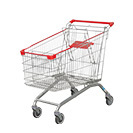 Shopping Trolleys
Shopping Trolleys Stainless Steel Trolleys
Stainless Steel Trolleys Tool Trolleys
Tool Trolleys Utility Carts
Utility Carts Warehouse Trolleys
Warehouse Trolleys Custom Trolleys
Custom Trolleys Lifting Equipment
Lifting Equipment Forklift Attachments
Forklift Attachments Jib Attachments
Jib Attachments Lifting Hoists & Pallet Hooks
Lifting Hoists & Pallet Hooks Manual Stackers & Lifters
Manual Stackers & Lifters Pallet Jacks
Pallet Jacks Pallet Lifters
Pallet Lifters Pallet Rotators & Dispenser
Pallet Rotators & Dispenser Powered Pallet Trucks & Electric Lifters
Powered Pallet Trucks & Electric Lifters Scissor Lift Trolleys and Tables
Scissor Lift Trolleys and Tables Conveyor Equipment
Conveyor Equipment Conveyor Frames
Conveyor Frames Conveyor Stands
Conveyor Stands Roller Conveyors
Roller Conveyors Skate Wheel Conveyors
Skate Wheel Conveyors Access Equipment
Access Equipment Container & Yard Ramps
Container & Yard Ramps Step Stools & Ladders
Step Stools & Ladders Work Platforms & Crane Cages
Work Platforms & Crane Cages Drum Handling
Drum Handling Drum Storage & Bunding
Drum Storage & Bunding Drum Trolleys & Lifters
Drum Trolleys & Lifters Forklift Drum Handling
Forklift Drum Handling Containment & Spillage
Containment & Spillage Aerosol Cans Storage Cages
Aerosol Cans Storage Cages Bunded Pallets & Storage
Bunded Pallets & Storage Corrosive Goods Storage Cabinets
Corrosive Goods Storage Cabinets Flammable Liquid Cabinets
Flammable Liquid Cabinets Forklift Gas Storage Cages
Forklift Gas Storage Cages Gas Cylinder Storage
Gas Cylinder Storage Site Storage
Site Storage Spill Kits
Spill Kits Stillage Cages
Stillage Cages Waste Handling
Waste Handling Bin Lifters & Tippers
Bin Lifters & Tippers Plastic Waste Bins and Carts
Plastic Waste Bins and Carts Steel Waste and Tipping Bins
Steel Waste and Tipping Bins Storage Equipment
Storage Equipment 750 Series Cage Configurations
750 Series Cage Configurations Heavy Duty Cabinets & Benches
Heavy Duty Cabinets & Benches Heavy Duty Shelving
Heavy Duty Shelving Mega Bins & Pallets
Mega Bins & Pallets Packing Benches
Packing Benches Pallet Racking Accessories
Pallet Racking Accessories Parts Trays & Stor-Pak Bins
Parts Trays & Stor-Pak Bins Pegboard & Louvre Panels
Pegboard & Louvre Panels Plastic Bins
Plastic Bins Plastic Handling Solutions Bins
Plastic Handling Solutions Bins Plastic Pallets
Plastic Pallets Stack & Nest Bins
Stack & Nest Bins Storage Cages
Storage Cages Workplace Equipment
Workplace Equipment Workbenches
Workbenches Modular Workbenches
Modular Workbenches Electric Height-Adjustable Workbenches
Electric Height-Adjustable Workbenches Floor Matting
Floor Matting Industrial Weighing Scales
Industrial Weighing Scales Pallet Wrapping & Packaging Machinery
Pallet Wrapping & Packaging Machinery Ramps
Ramps Stationery Cupboards
Stationery Cupboards Storage and Stillage Cages
Storage and Stillage Cages Tool Trolleys
Tool Trolleys Tooling Cabinets
Tooling Cabinets Wheelie Bins
Wheelie Bins Workshop Equipment
Workshop Equipment Safety Equipment
Safety Equipment Gloves and PPE
Gloves and PPE Pallet Rack Post Protectors
Pallet Rack Post Protectors Safety Barriers & Bollards
Safety Barriers & Bollards Safety Knives & Cutters
Safety Knives & Cutters Signs and Traffic Supplies
Signs and Traffic Supplies Tool & First Aid Boxes
Tool & First Aid Boxes Construction Equipment
Construction Equipment Concrete Equipment
Concrete Equipment General Site Equipment
General Site Equipment Lifting Equipment
Lifting Equipment Site Storage
Site Storage Waste
Waste 










